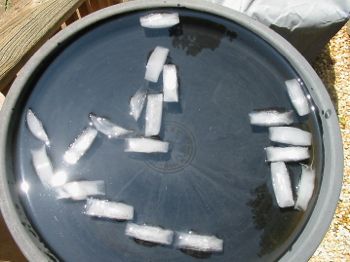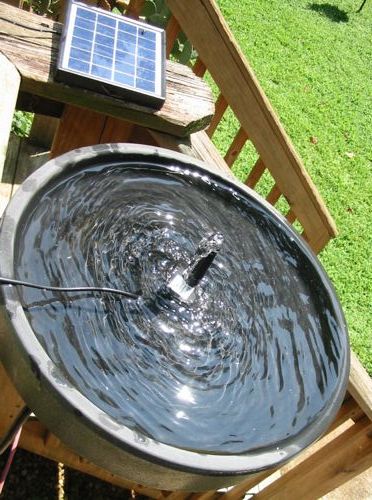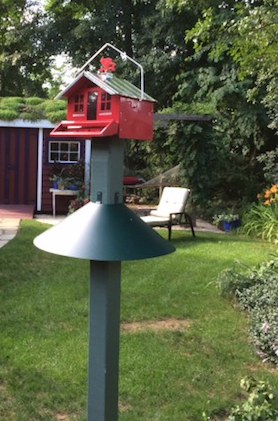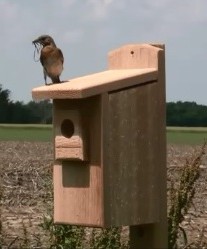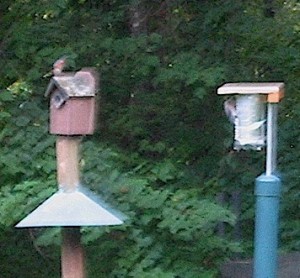-
Gear Up that Window Hummingbird Feeder
The southern trek approaches and hummingbirds instinctively know to fuel up for the long journey. As daylight hours become shorter, all migratory birds are preparing for their long flights south.
Because hummingbirds are so territorial, they seem to spend more time fussing over (defending) their claimed feeders than actually eating. This time of year can be a trip if you really observe the tiny sprites. Adding an extra feeder is most helpful, if you can add two… even better. Consider a window hummingbird feeder, or at least placing one of them within view from inside your home. It’s an ideal way to catch small glimpses of action here and there while going about your daily routine. If we could sit on the deck all day and just watch… many of us would, the sprites are that mesmerizing.
Migration is a frenzied time around feeders. In the Eastern part of the country, male Ruby Throats begin their journey first. So aggressive around feeders, it seems their lives depend on that nectar. Females and juveniles follow, but you’ll never see them in groups or flocks because they fly solo. Even first-timers follow the instinct Mother Nature gave them to fuel up and find better digs for winter. Some land in Mexico for the season, while others
journey further to Central and South America.
Nectar solutions can be a little stronger now as some recommend changing the ratio from the standard 1:4 to 1:3. One cup table sugar to three cups of water. The extra calories serve hummingbirds well in their quest to fatten up.
It’s also the optimal time for a swing! Say what? A hummingbird swing… really! Have you ever seen them? They’re hanging perches for the birds to rest while guarding their feeder. When we first installed ours, it seemed so-so, not a whole lot of action. But once the big migration was under way… omg, what a hoot! It’s the original, it’s Pop’s Hummingbird Swing and here’s the real story – enjoy!
- Bath Heaters & Deicers, Bird Accessories, Bird Baths, Heated Bird Bath, Solar Birdbath Bubbler, Uncategorized
Heated Bird Baths in Summer?
So when it’s 90 degrees, how useful is that heated bath? Certainly unplugged and cord tucked for the season, it will still see daily activity and may even be life savers for some birds during severe drought. Regardless of seasons, water is a critical life source for all beings.
When folks turn their baths over for winter, the birds who depended on that water source must find another. I wonder what they must think? The birds that is- not the people! “Don’t they understand, we need water in winter too! It really sucks trying to eat snow, takes too much energy.”
Whether you’re thinking of purchasing your first birdbath, or adding an extra one to your habitat, heated bird baths are a wise choice for year-round use. Because another severe winter looms on the horizon, resident birds will benefit as will your whole bird-watching experience!
And on those dog days of summer? Ice cubes offer a refreshing spot, or even accessories like solar fountains will create a most welcoming haven for feathered friends!
-
Use a Squirrel Baffle to Protect that Nest!
Squirrels can be such a major nuisance around bird feeders, hence the baffle was invented. Aptly named to foil their shenanigans, lots of options are readily available to accommodate wood posts, garden poles, and hanging feeders too. Even fancy shepherd’s hooks have been taken into consideration, with a squirrel baffle that splits or opens to install – then locks back together.
With generally cooler temperatures in most parts of the country this summer, the busy nesting season has seen many birds on their second and third broods. Some use birdhouses (bluebirds, wrens, chickadees) and some don’t (cardinals, goldfinches, hummingbirds) preferring to nest in mature trees and shrubs.
Sadly, birdhouses get their share of thieves, from squirrels and raccoons, to snakes, cats and larger bully birds. Eggs and babies may be killed by territorial birds or eaten and just disappear all together.
One wouldn’t think it’s common practice to use a raccoon or squirrel baffle on a birdhouse… but until you’ve lost a nest of babies to one of these predators, it makes perfect sense!
The image at left is a bit fuzzy, but it illustrates the use of two different kinds of baffles protecting these houses. The one on the right is even home-made, using PVC pipe and an end cap from the home improvement store. It should really be at least 5 inches in diameter (this was our first try) and it works on the “rocking principle”.
A simple search for stovepipe baffle will show you how to make an expensive and effective design for posts or poles to thwart both raccoons and squirrels. Grow strong and thrive little bluebirds!

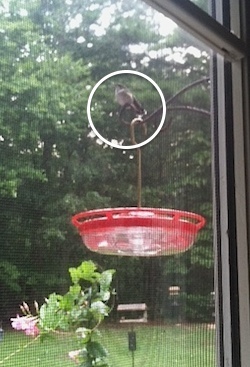
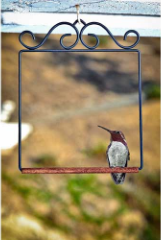 journey further to Central and South America.
journey further to Central and South America.